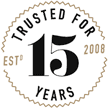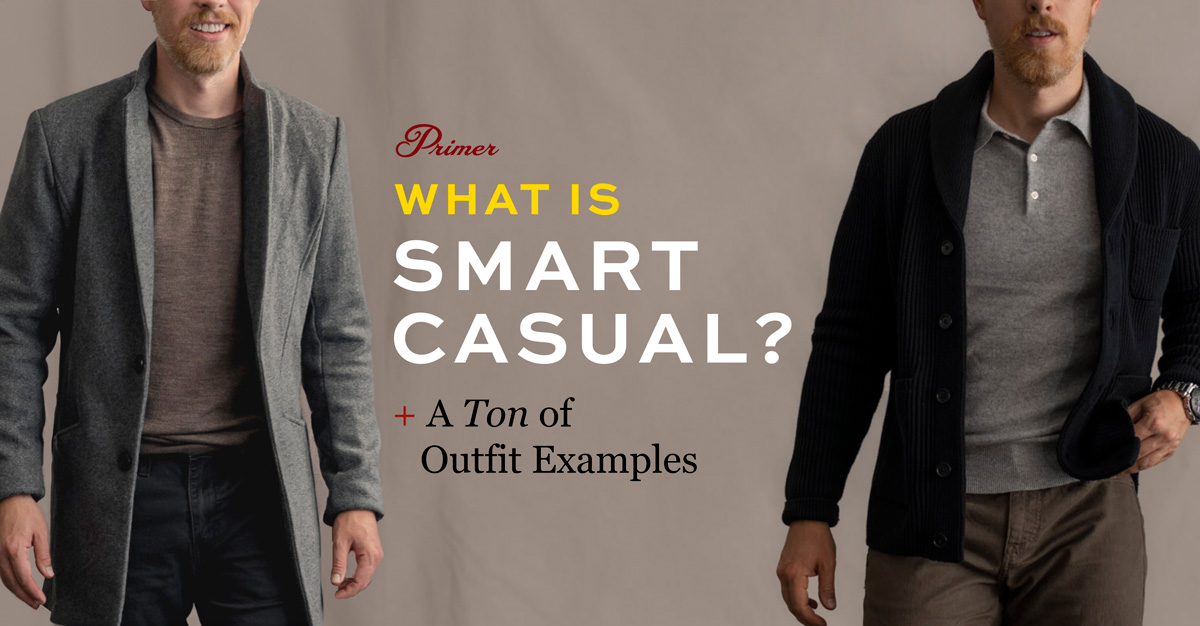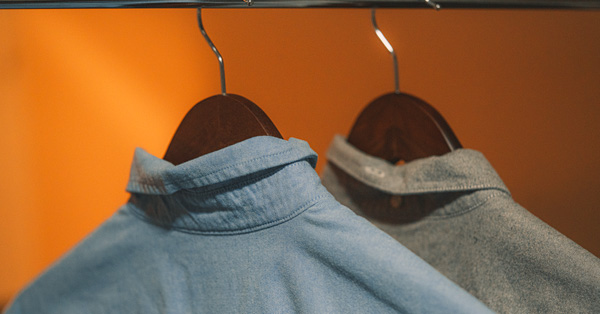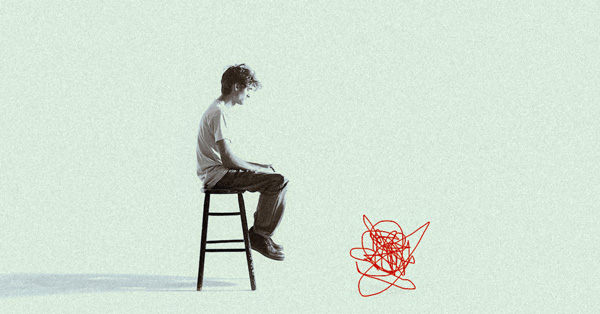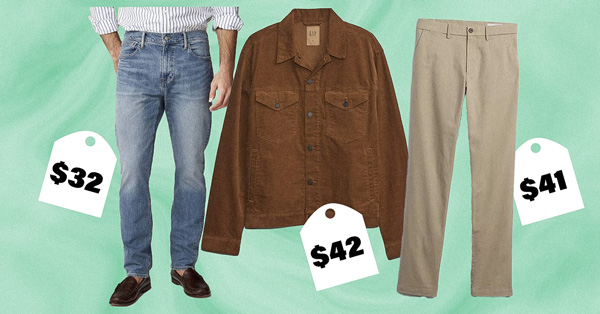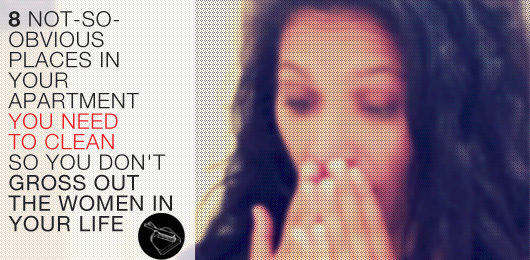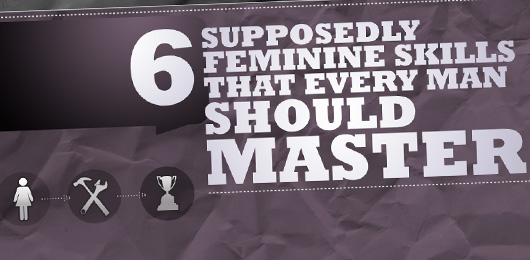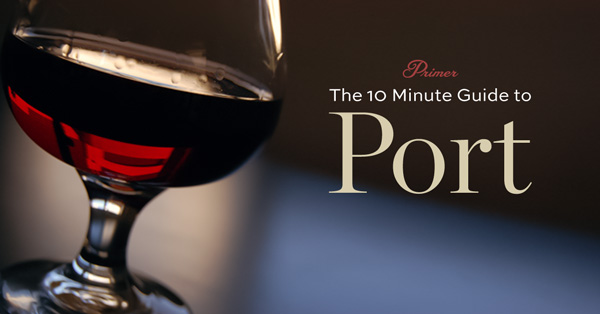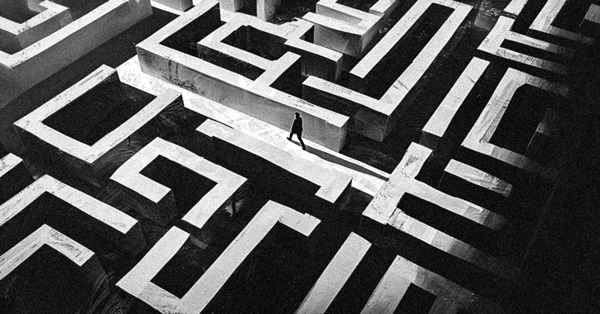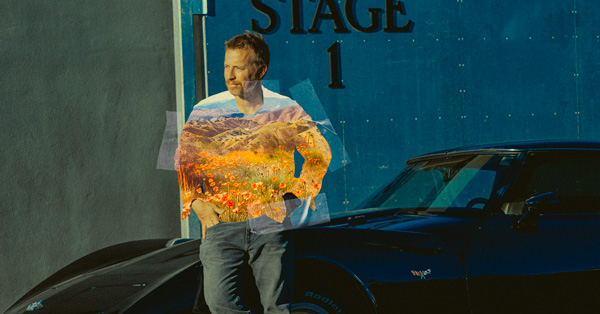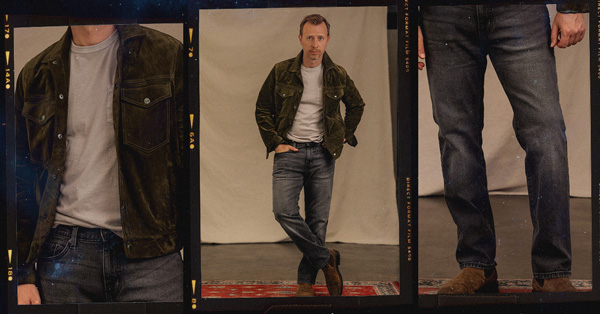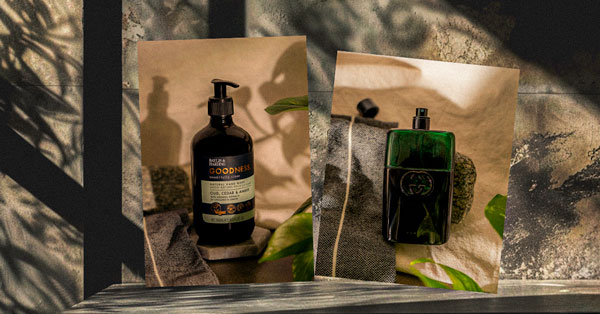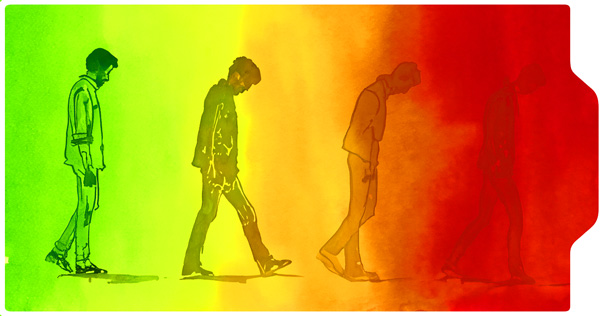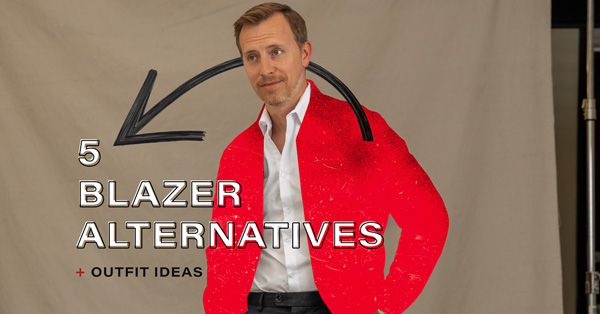This guide was rewritten in January 2024 | Andrew, Primer's editor and founder since 2008, has established himself as an authority in men's style, speaking at conferences and providing creative consulting for national clothing brands.
In the past, someone's personal style mainly depended on their work clothes. Think about previous decades when middle managers wore suits less formal than the company's lawyers but more formal than its copywriters. You could infer a person's professional status simply by their style uniform.
Today, fashion is about a lot more than the office. We have freedom to build our own personal style and live in a world where it's possible to have a wardrobe that is equally appropriate and modifiable for a day at a graphic design firm, a dinner at a nice restaurant, or an evening at the theater.
If you’re free to create your own look, why not create a wardrobe that can work in almost any situation? This desire to create a sharp, versatile wardrobe has given rise to smart casual.
What is the Smart Casual Dress Code?
Smart casual sits between casual and dressy clothing, without the defined uniform business casual has:
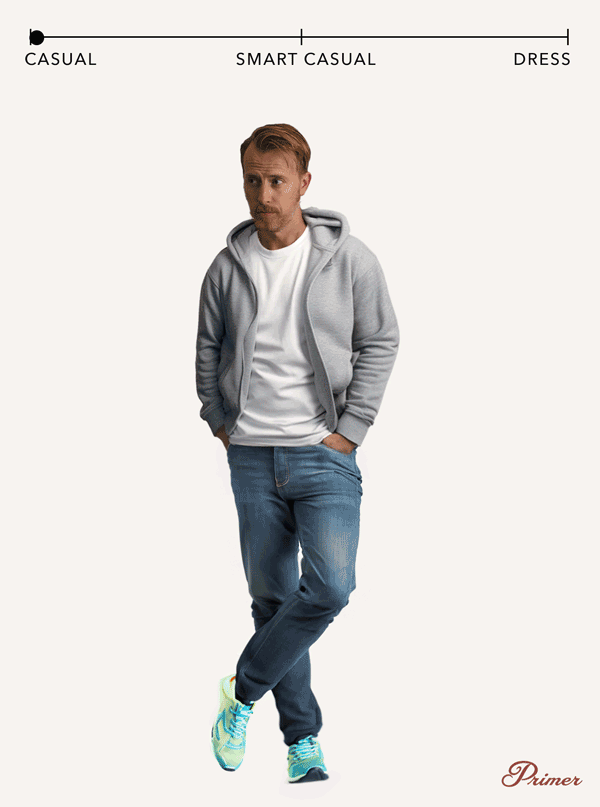
First and foremost it's important to understand that unlike the “professional,” or “business casual,” or “black tie” dress codes, for example, that specifically dictate what clothing items should be worn, smart casual is more about an approach to what to wear: Creating an overall look that feels put-together, respectful, refined, yet casual and not over-dressed.
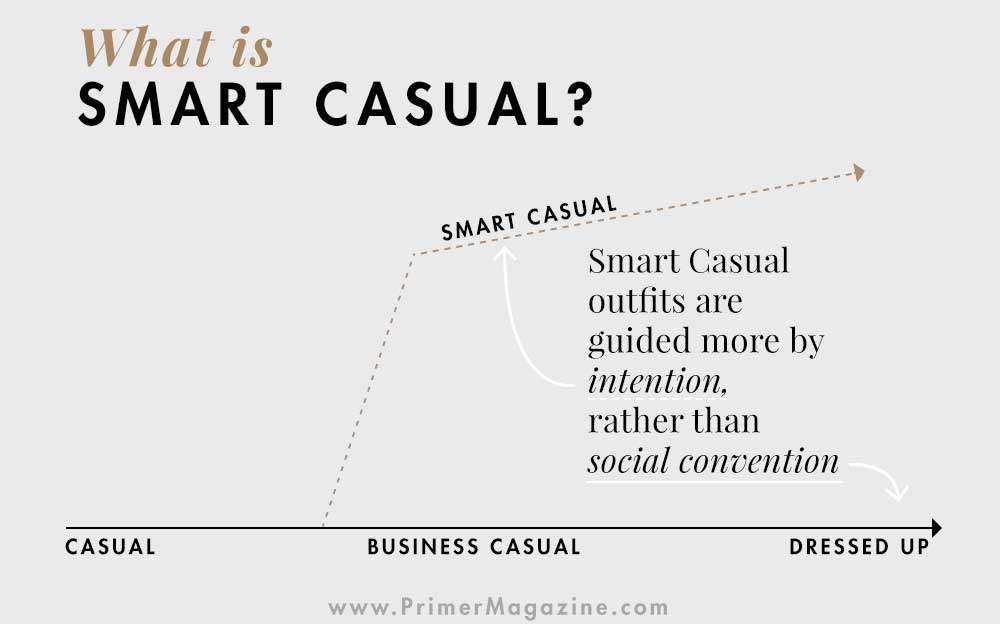
What does “smart” in “smart casual” mean?
“Smart” refers simply to appearing intentional. The look is the appropriate level of dress for where you're going and has an air of sophistication while still being overall a casual outfit. Synonyms for smart casual could be “dressy casual,” or “refined casual”. At a smart casual function, everyone could be dressed differently, but they would all feel like they are dressed equally appropriately.
Smart casual is a pair of well-fitting jeans, a blazer, and desert boots:
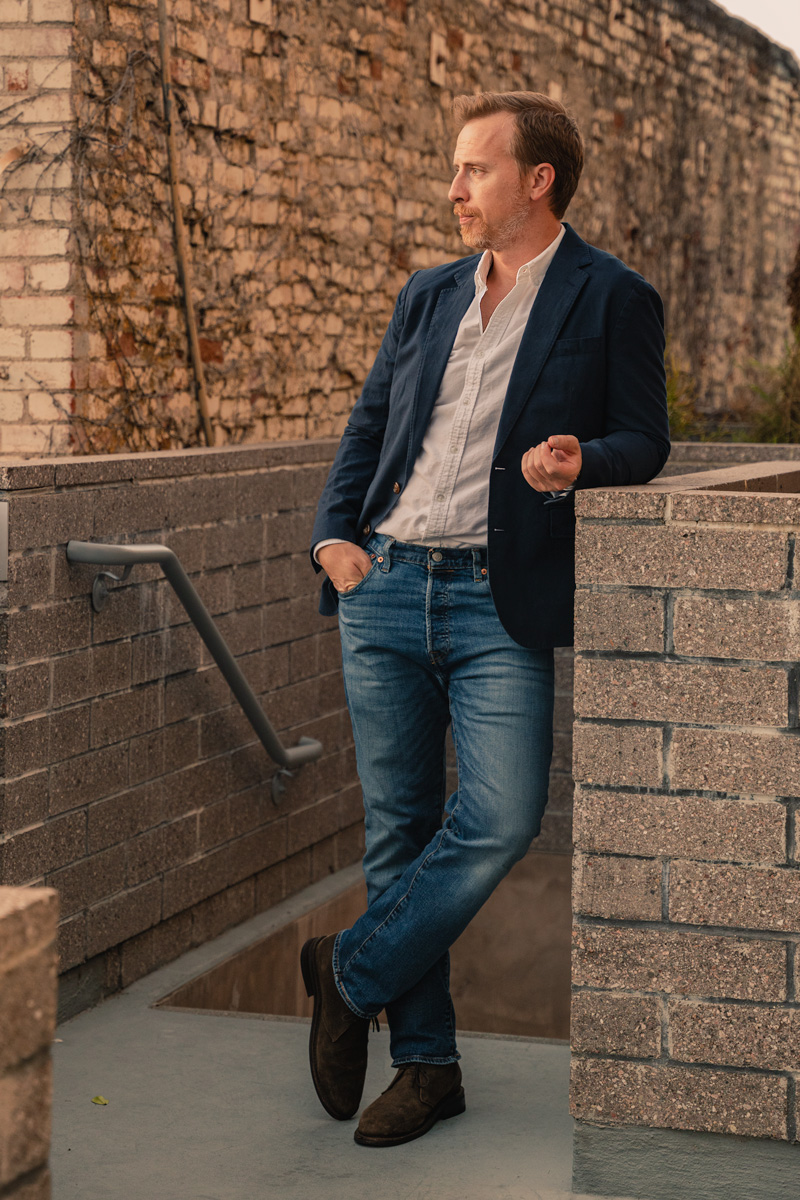
Smart casual could also be a topcoat, sweatshirt, dressier pants, and white sneakers:
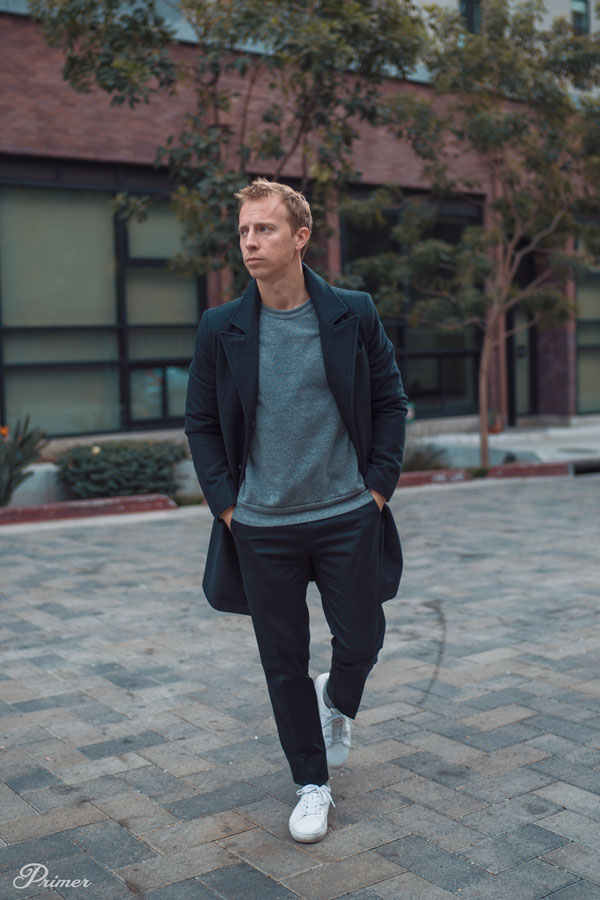
Done right, a smart casual look can work in “casual,” “business casual,” and even some “dressed up” environments while still standing out from the crowd. At a casual bar night, you’ll look sharp. In a low-key business meeting, you’ll look bold but professional. No matter where you go, you’ll have the confident look to impress.
These days, almost everything you do in life doesn’t have clearly defined style expectations. Treat this as an opportunity. You have a chance to plant a flag with your fashion intentions.
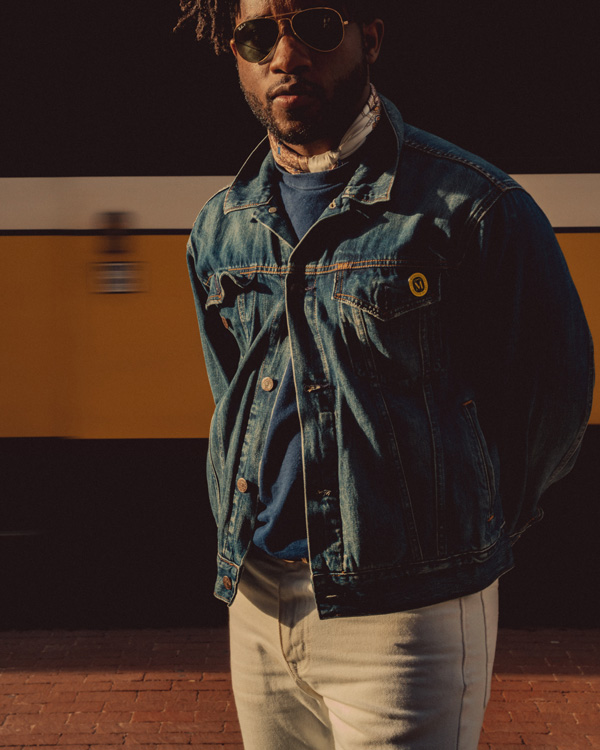
Smart Casual Outfit Examples
Some could confuse smart casual as anything dressier than a hoodie, but less formal than a business suit. That doesn’t give us much to work with. You could also get hyper-specific, checking off a box to create your smart casual outfit: a blazer, dress shirt, neat jeans and brown loafers. Looking at it that way is far too confining.
It’s better not to look at smart casual as a set of rules or a list of particular items. Your intention is to look great in your environment. A smart casual outfit should feel adaptable, sharp, and ready for anything.
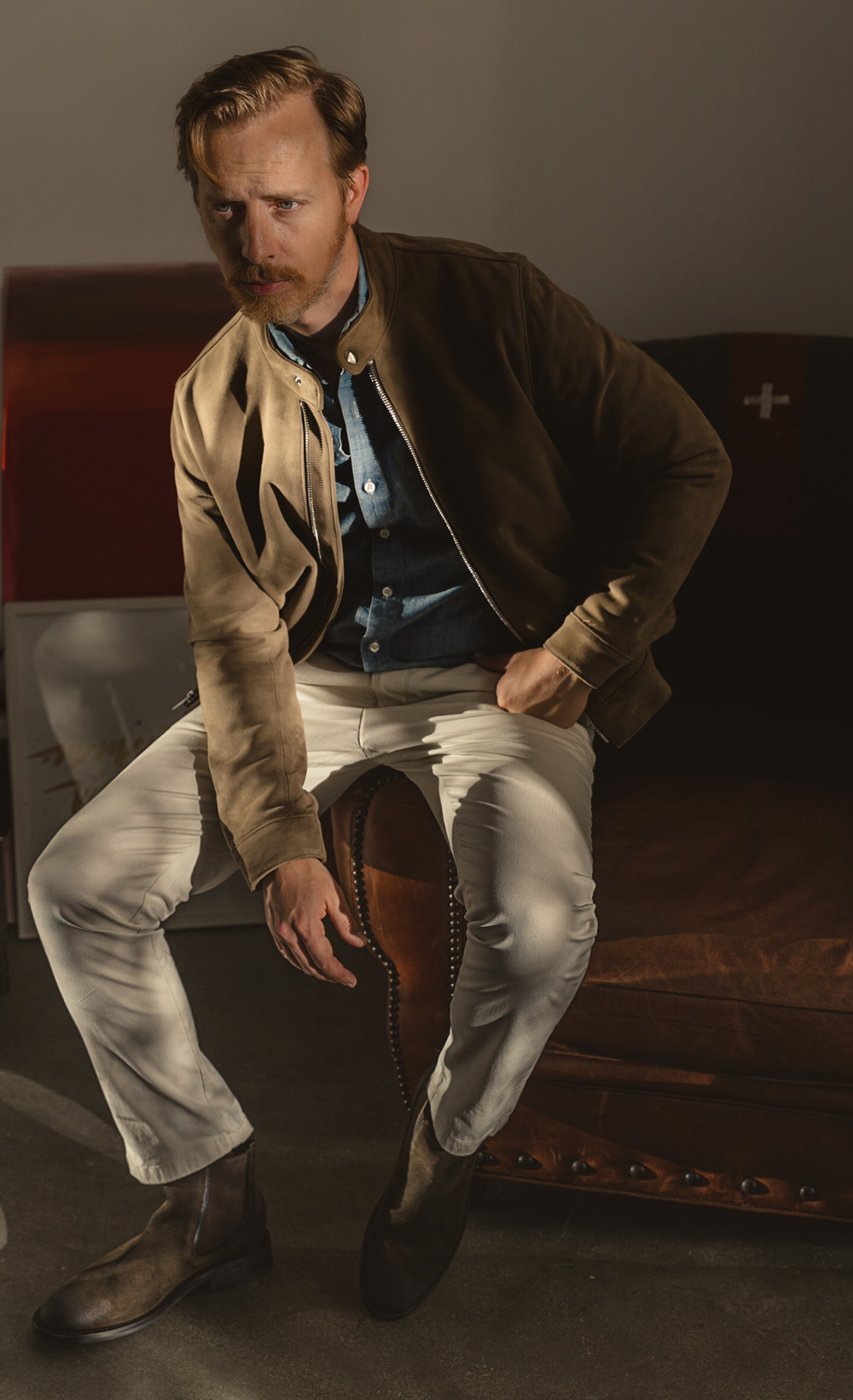
Smart casual can even mean the right t-shirt (perhaps accompanied by a sophisticated jacket) or even the right sneakers (probably solid colored and lower profile).
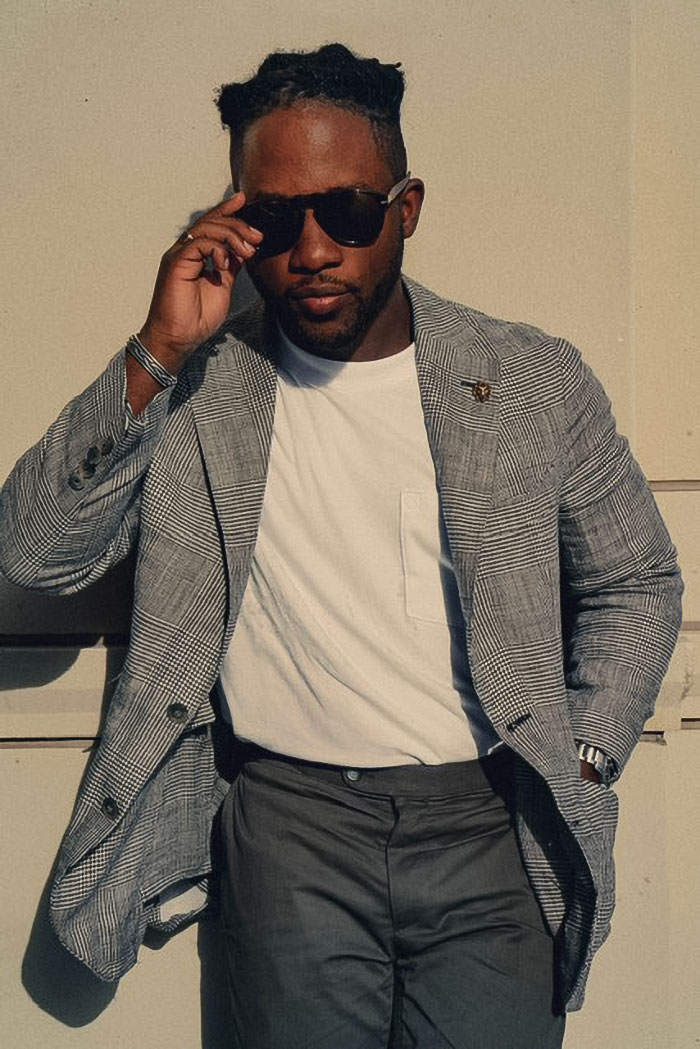
Smart casual is like art: you know it when you see it. Or rather, you know it when you feel it. You'll know you nailed it when you feel like you look good but not overdressed for wherever you're going.
Take for instance this Ryan Reynolds-inspired style: The combination of subdued colors and the mixture of dressier elements (tucked-in button up shirt, chinos) with more casual items (bomber jacket, low profile brown high top sneakers) feels like you got ready on purpose, but not like you're dressed up.
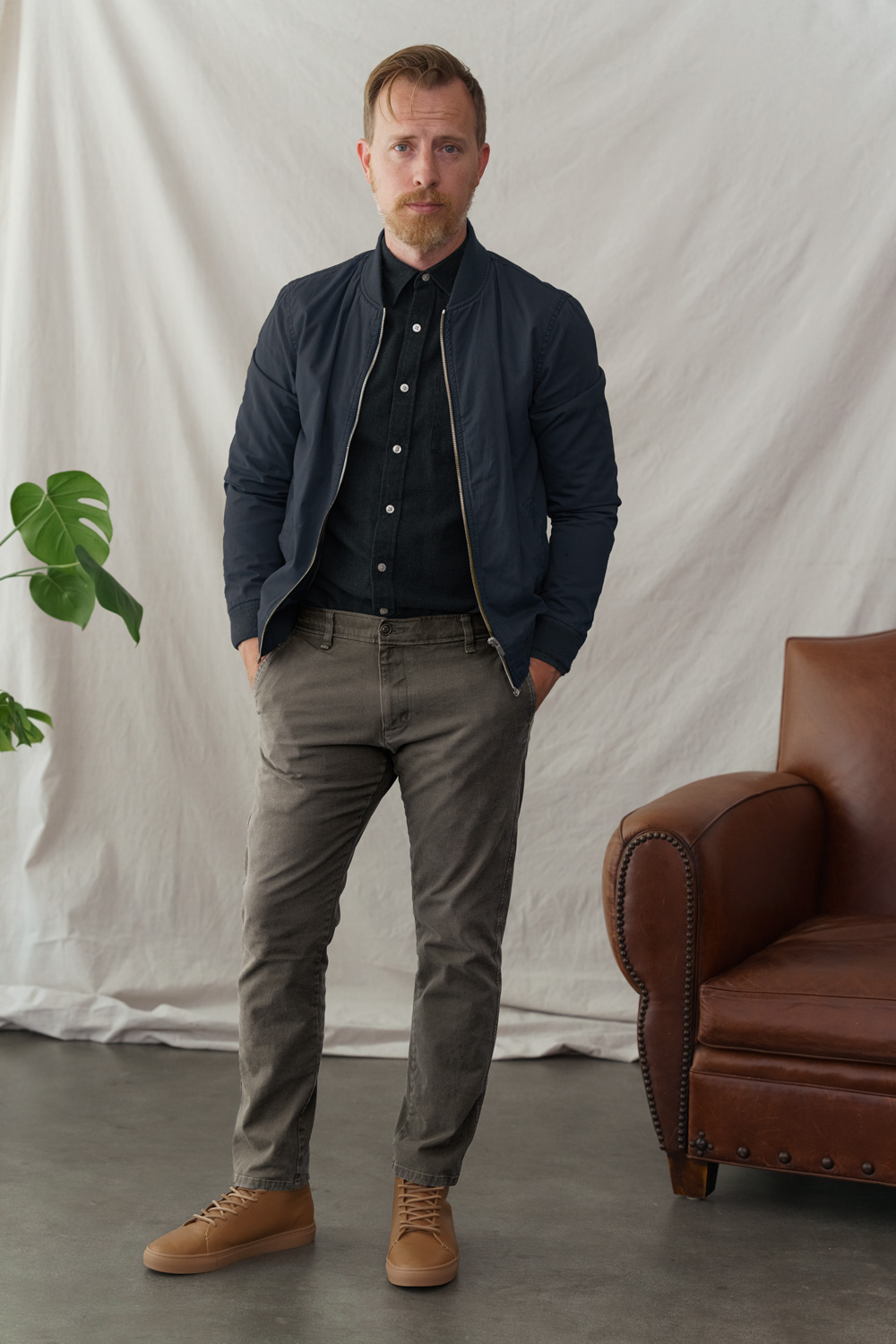
Using a similar color scheme but swapping the bomber for a blazer, and the high tops for suede dress shoes creates a more professionally focused, but still smart casual, aesthetic:
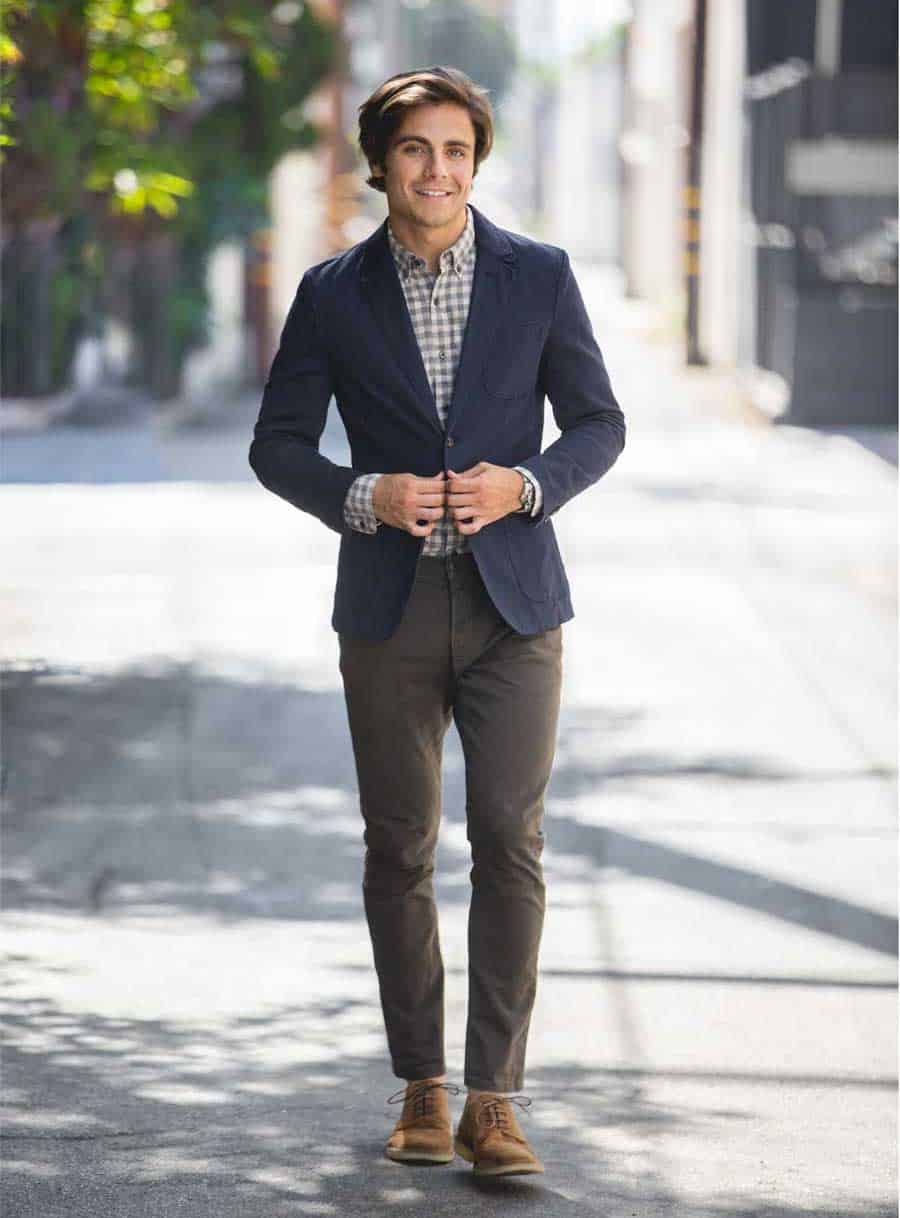
Tricks for Making Smart Casual Outfits
Swap the jacket and shoes of a dressier outfit with more casual or rugged options:
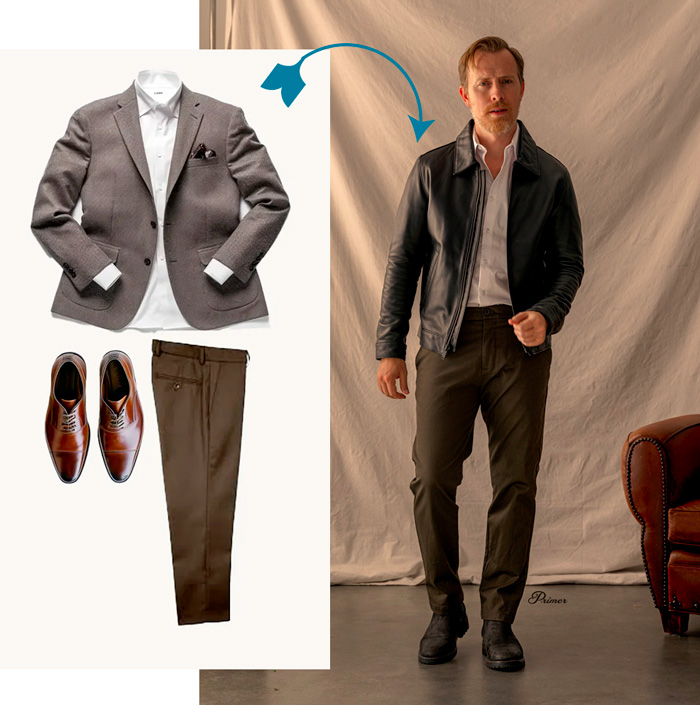
Swap the shirt and shoes when wearing a suit or blazer for more casual options:
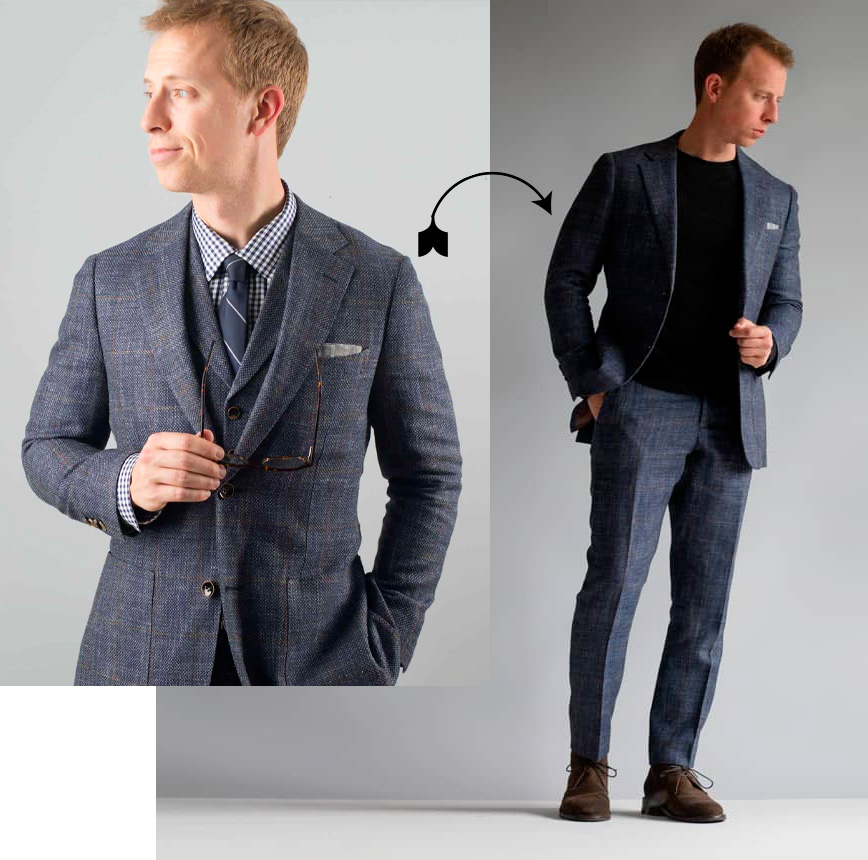
Let the pants be the dressier focal point:
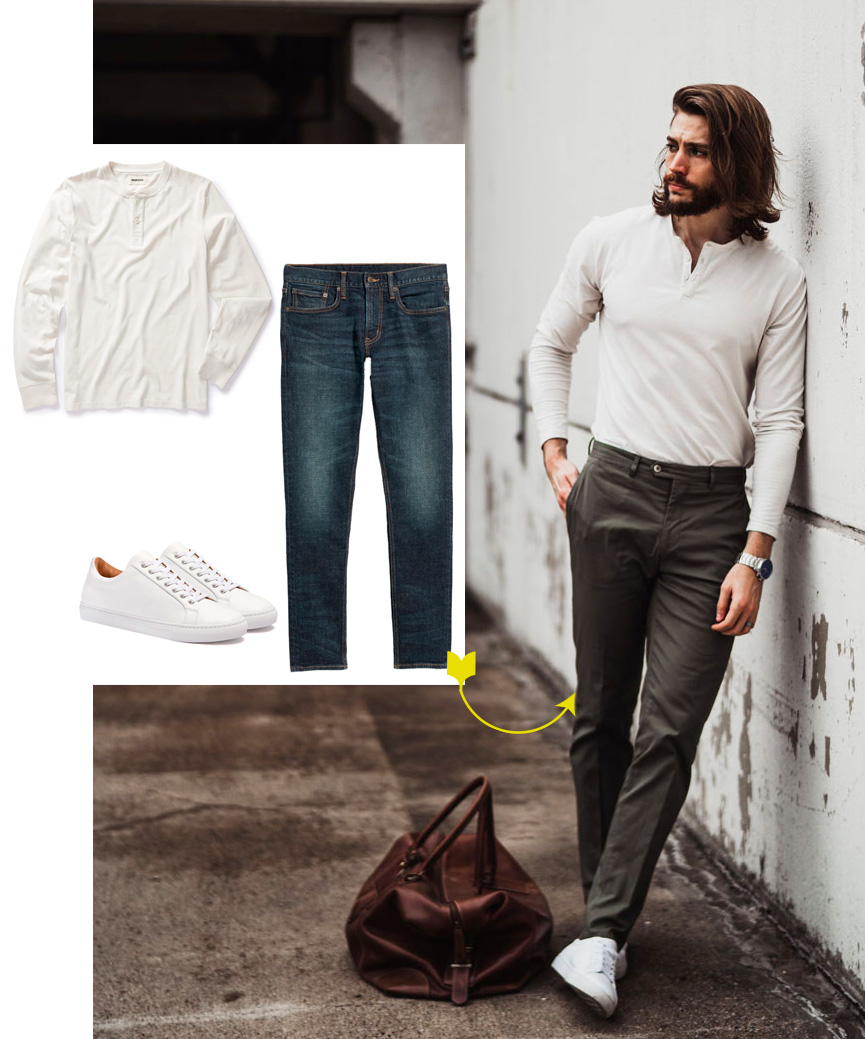
Choose dressier versions of casual items and more casual versions of dressier items:
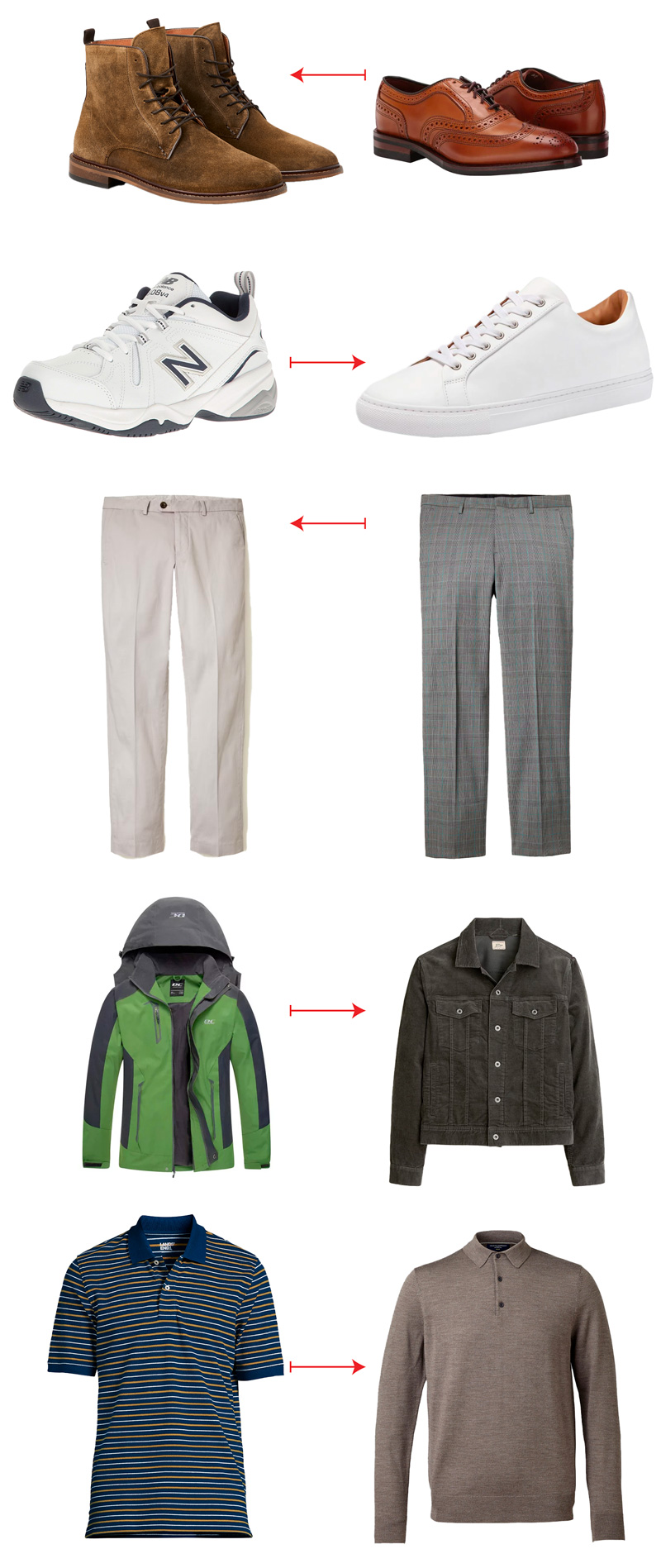
In fact, those items make a GREAT smart casual outfit by focusing on a limited or subdued color palette:
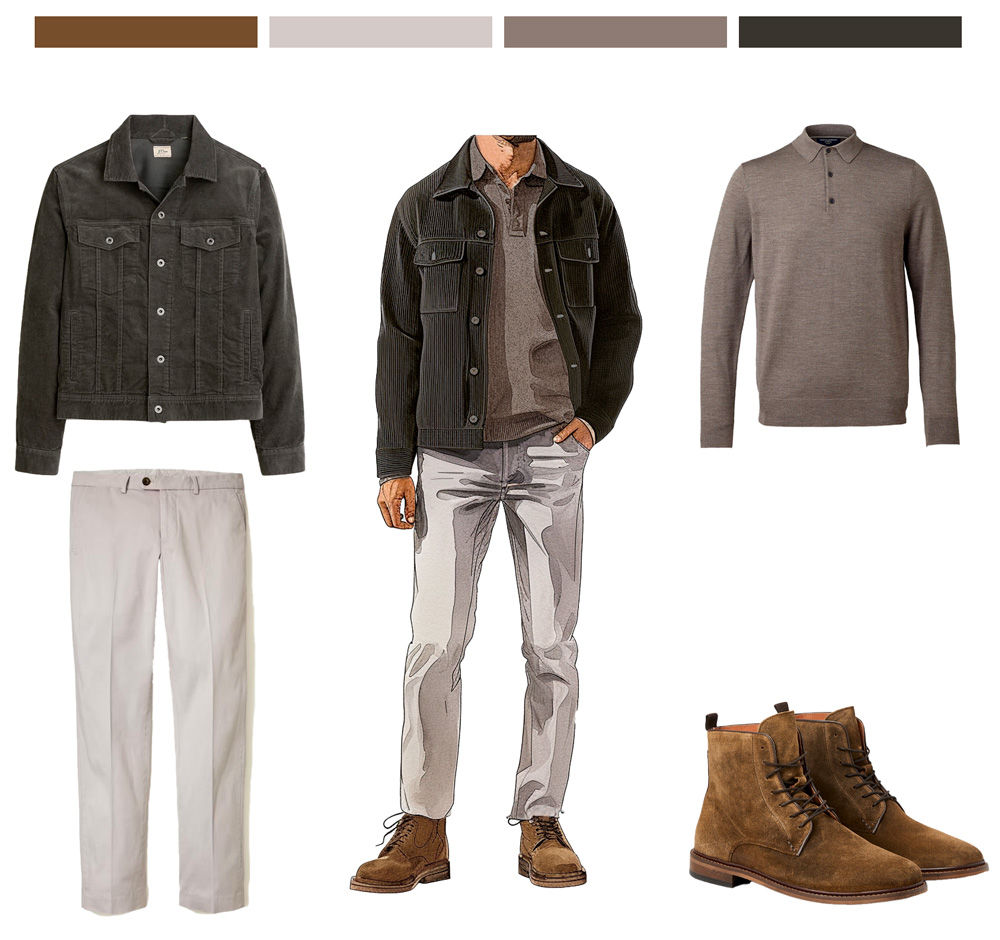
Wearing or not wearing accessories to augment formality
Update! As readers Jeff and Gary point out in the comments below, many of the outfits in this guide don't feature belts. Like forgoing a tie to create a more casual appearance, the same can be done with the strategic choice of accessories. I created mockups of these outfits with belts and recorded a screencast where I walk through my thoughts:
Smart Casual VS Other Dress Codes
Since the smart casual dress isn't defined by specific clothing items, sometimes it can be hard to fully grasp the idea. One method that can help is to visualize a smart casual outfit alongside other dress codes:
Casual Style Dress Code VS Smart Casual
Casual, of course, is your most relaxed look. It isn’t necessarily as simple as waring whatever you want. If you receive an invitation that reads “casual attire,” you probably shouldn’t show up in gym clothes. For our purposes, “casual” means no pretense of formality.
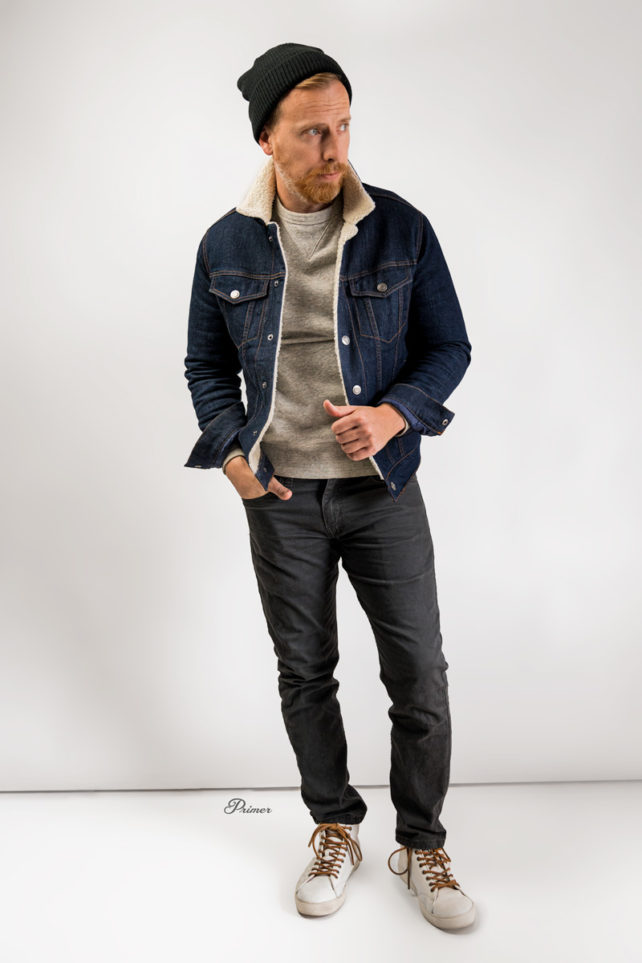

Business Casual Dress Code VS Smart Casual
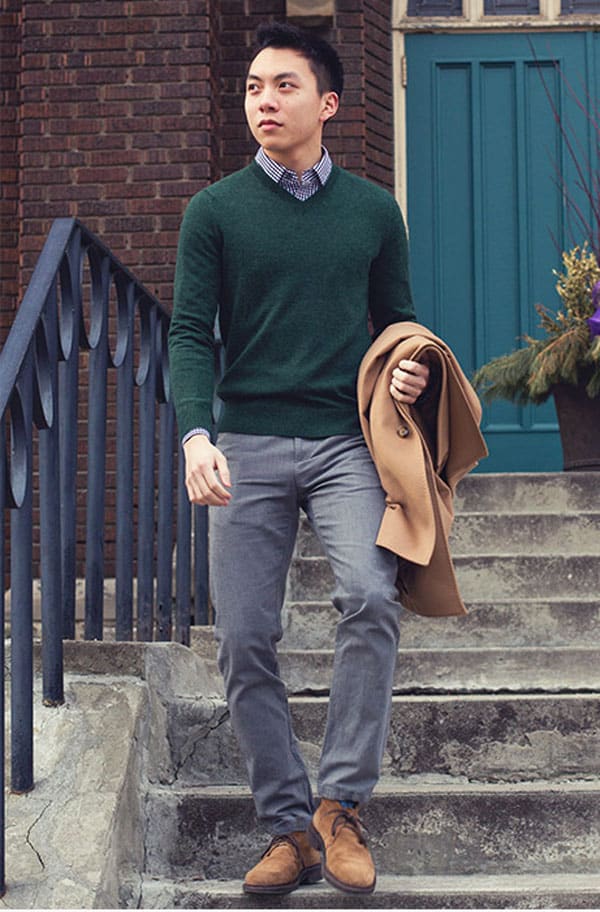
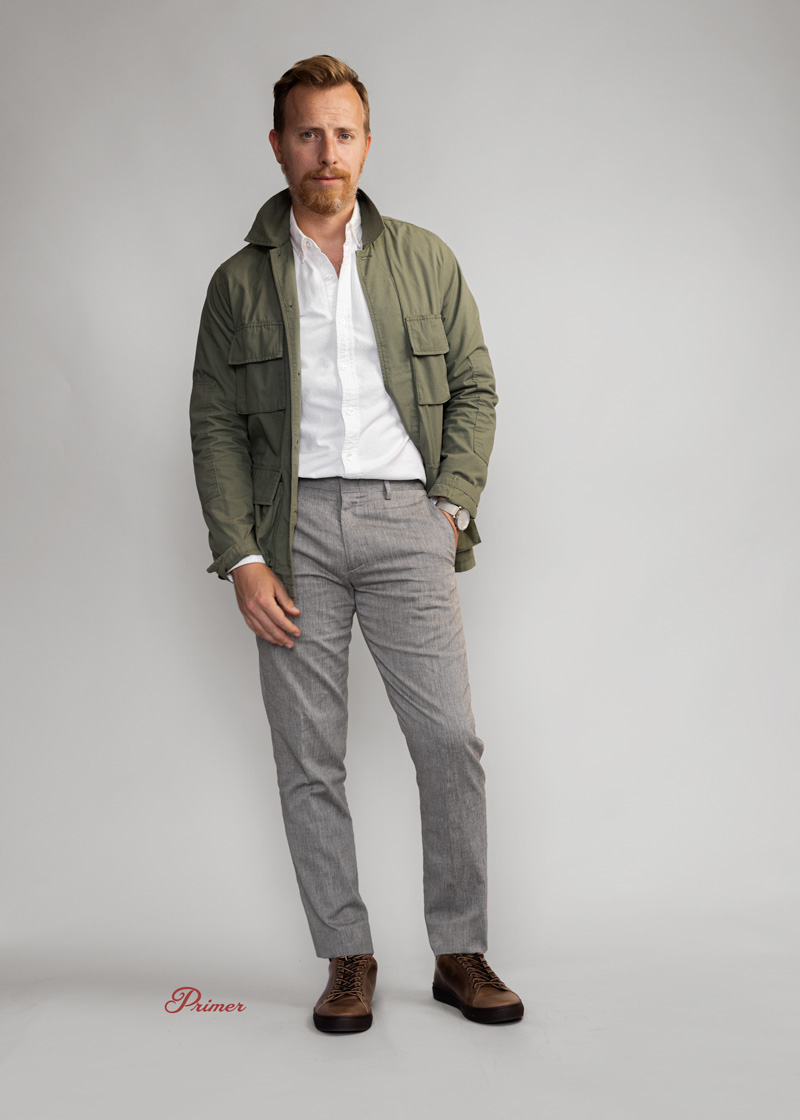
Though some workplaces have moved to a more relaxed environment, many offices still have a business casual dress code. Business casual probably doesn’t mean a suit; touches of formality like blazers, khaki pants or suit pants, a button-down shirt or polo, and dress shoes are hallmarks of the classic business casual look.
Dressed Up, Professional, Semi-formal Dress Code VS Smart Casual
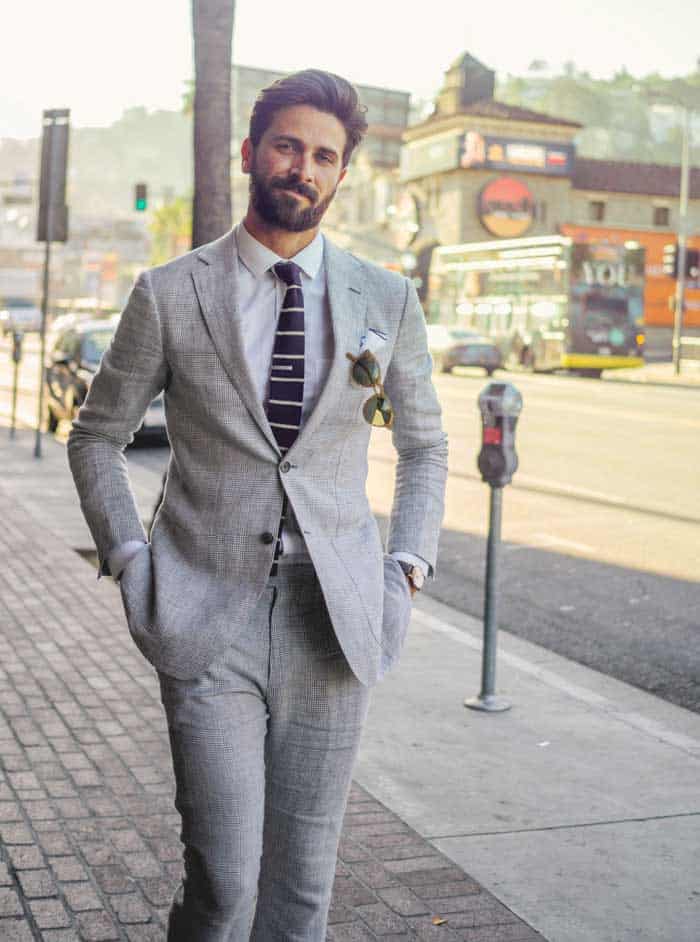
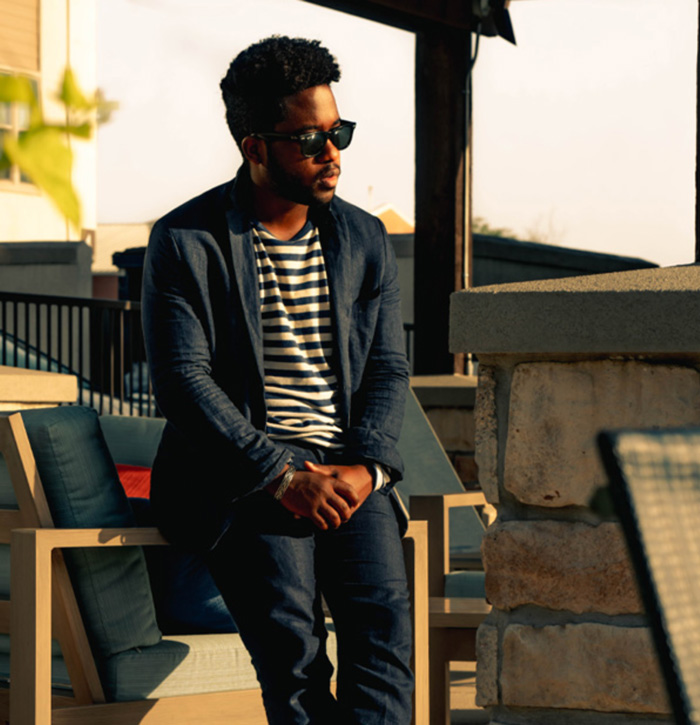
This is the clothing you wear on special occasions or if you have a career that still requires a daily suit. When you are “dressed up,” you are matching your attire to specific standards, locations, and conventions. We all know how you dress for a job interview, a wedding, an anniversary, or a funeral. Each of these events comes with social expectations, and we have a shared style language around these important occasions.
Smart casual can still be comfortable, but there’s an added layer of attention and *intention*. You’re thinking of smaller details and adding layers. Maybe you’re still in jeans, but you’ve chosen a fitted t-shirt made from a finer cotton without any graphics on it. Or you’ve swapped out the tee for a button-up shirt and slipped on some higher-end sneakers.
Smart Casual Style: A Feeling
This room for creativity is what makes smart casual so great. Rather than defining smart casual by specific items, think of smart casual as a feeling.
What is that feeling?
When you’ve done smart casual right, you should feel like you can walk into any room and have people think, “Dang, he looks good.” With a few exceptions, like a trip to the courthouse or a wedding reception, smart casual can work in most modern situations.
The best advice we can give for perfecting a smart casual look is allowing space for experimentation. If you’re feeling too dressy, a lighter color jacket or simple switch to a more casual shoe might do that trick. If you look in the mirror and feel like the look is too casual, swap out your bomber for a blazer or your jeans for some slim wool trousers.
At the end of the day, smart casual is about empowering yourself with your best look.
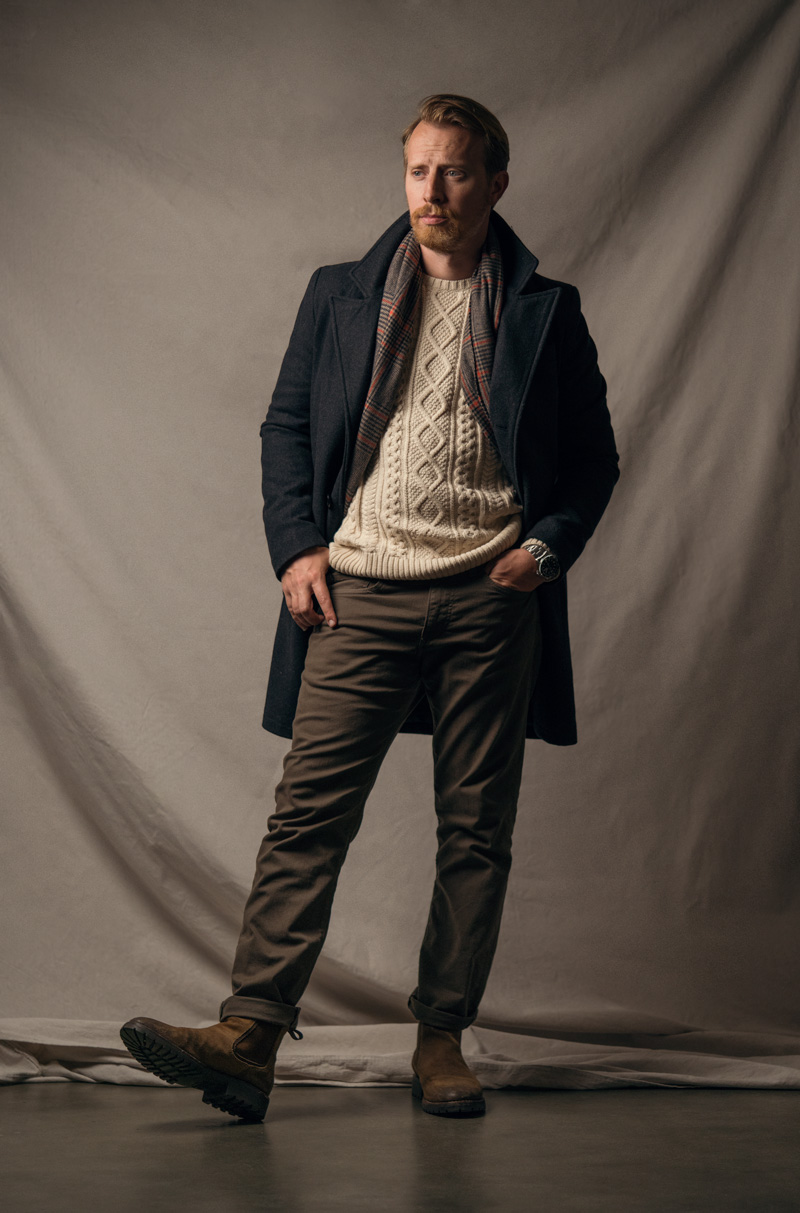
FAQ: Other Smart Casual Questions
Is a polo shirt smart casual?
Generally speaking, a traditional pique polo is not smart casual. The collar and texture gives it a whiff of business casual formality, but evaluate the way you would a t-shirt to determine if your favorite polo is “put-together” or “informal”. Pique polos are generally a little looser, with a robust weave and an uneven–or ‘tennis tail”–hem, stylistic nods to the shirt’s sporting roots.
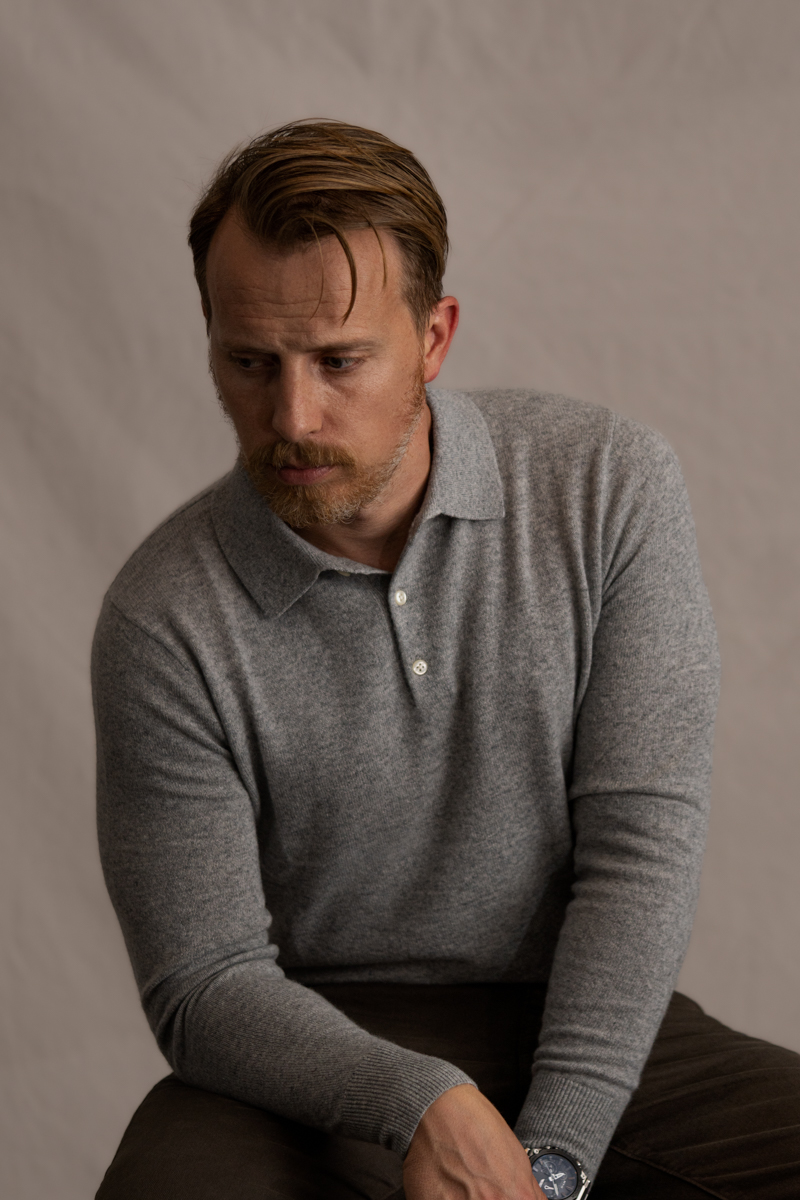
If you want to incorporate a polo shirt into your smart casual wardrobe, choose a dressier, more refined style like the knit polo. Look for details like a more structured silhouette, finer materials (such as silk or linen), and a clean hem:
What should you wear to a smart casual wedding?
Smart casual weddings are the perfect time to inject a little bit of fun into an otherwise more traditional event. That means dressier sneakers or loafers, dressing down a suit with a t-shirt or short sleeve button up, or if it's in the summer, embracing the more colorful (and heat appropriate) Garden Casual.
Where Does the “Smart Casual” Dress Code Come From?
The first known usage of the phrase “smart casual” was in 1924. The writer was describing a “sleeveless dress with three-quarter overblouses, in smock appearance completing it for streetwear.” The women’s look, somewhere between flapper chic and office modesty, was conceptually similar to what we consider smart casual today.
In the 1950s, you started to see the term used in menswear. At that time, the term was simply used to describe a suit that was more casual than what you would wear to the office. Even though the look was different, the concept was the same. A smart casual suit was something a man could wear in almost any situation and feel good.
Smart casual as we know it today first emerged in the 1980s. Shifting standards of formality and the rise of informal workplace attire blurred the line between work wear and street style. It was now possible to create a look that was entirely personal and extremely versatile.
The modern version of smart casual was born.
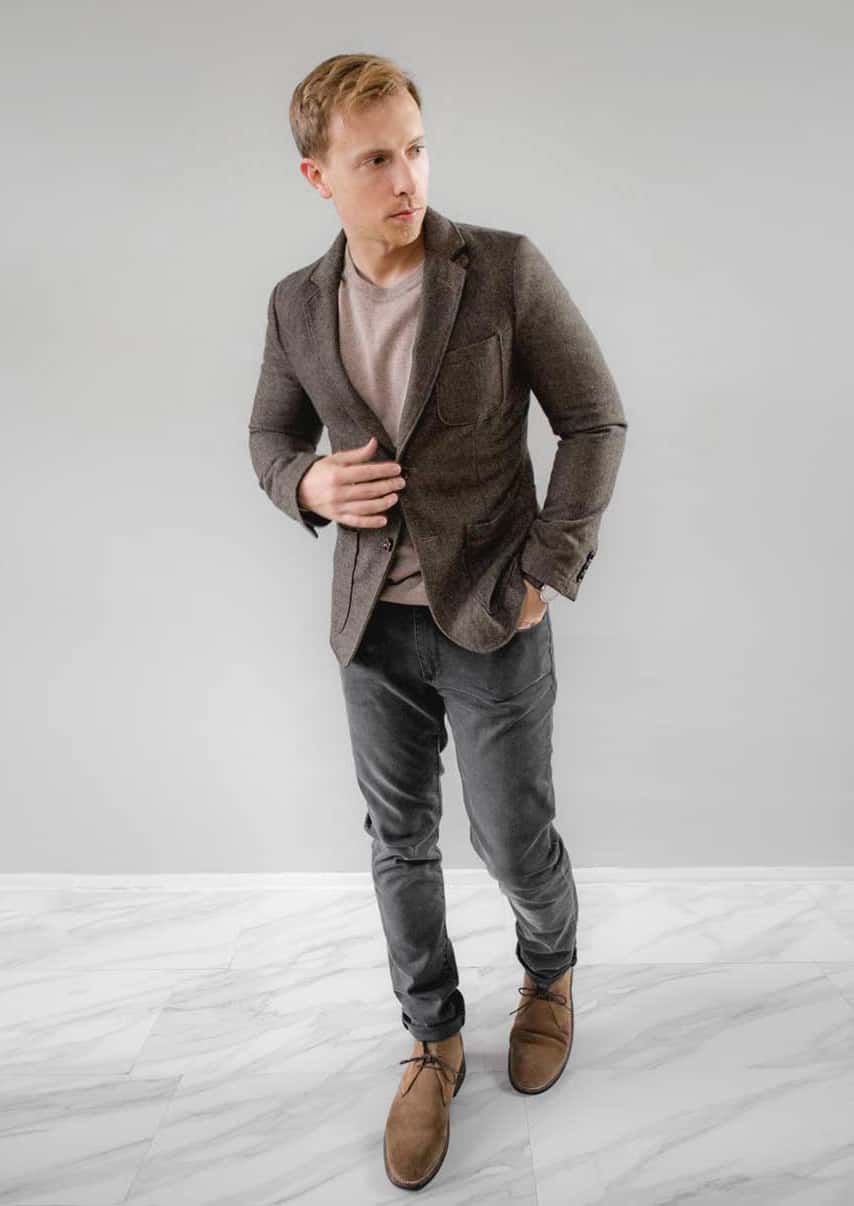
Get More Smart Casual Inspiration from our Getup Series
Finally, for more advice on how to build a smart casual look, check out Primer’s long-running outfit inspiration series, The Getup. We’ve been running the series for 14 years, as we attempt to offer great looks for a variety of occasions and seasons. Whether you’re trying to dress for a smart casual office, prepare for a “spring weekend adventure,” or yor just want to find your “smart summer casual” look, we’ve got you covered. With the Getup, we won’t just tell you about a look, we’ll tell you how to make that look your own.
→ See our smart casual outfits in The Getup series
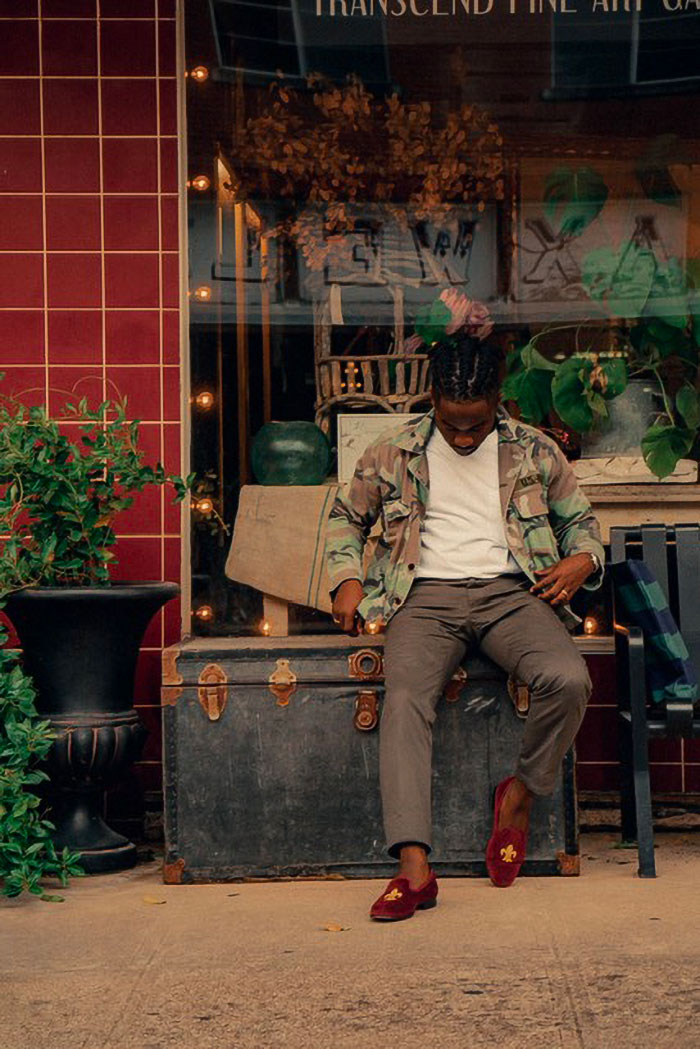
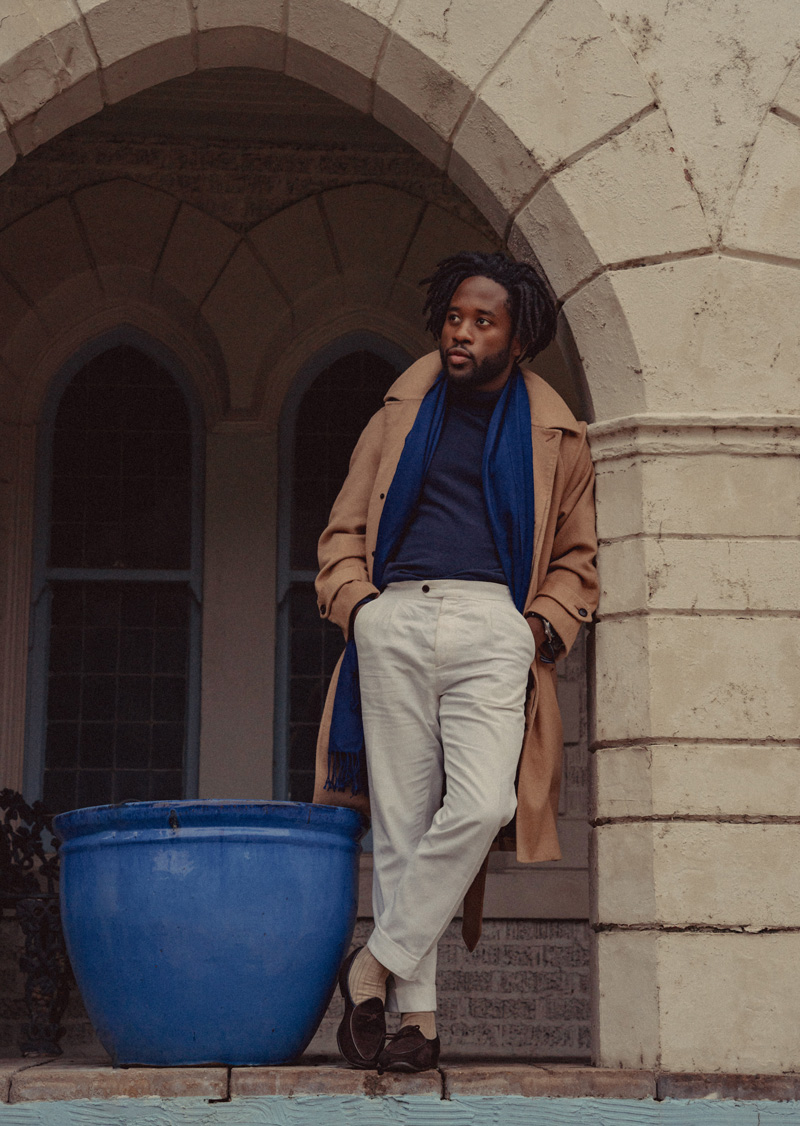
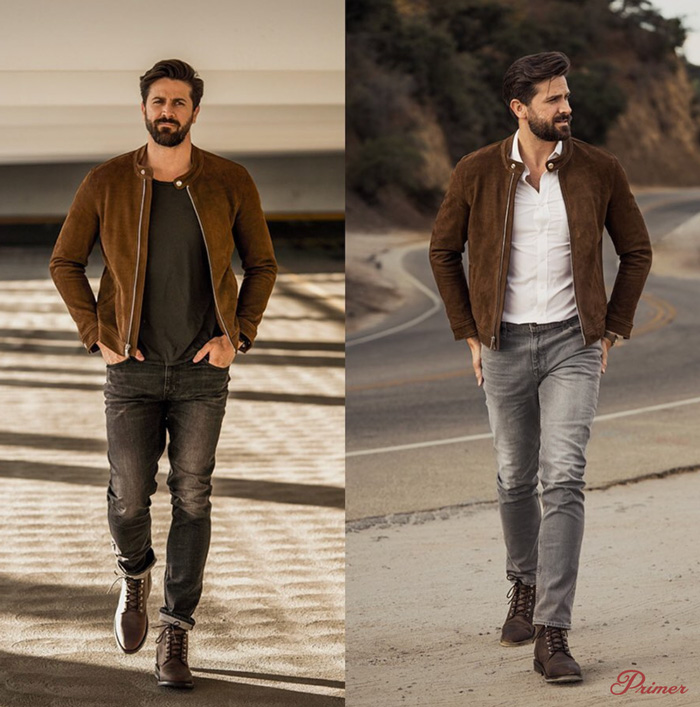
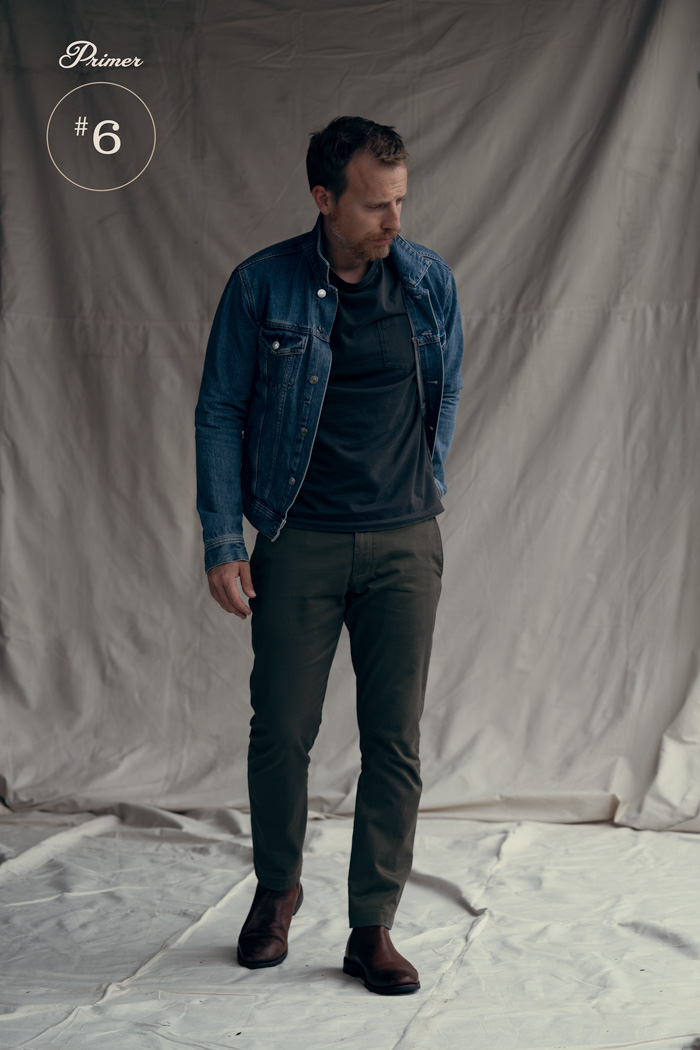
We’ve told you what smart casual is, we’ve given you advice on how to build your smart casual look, and we’ve showed you where you can find style inspiration. Now it’s time to figure out what smart casual looks like for you.
It’s time to to build that sharp look that can work no matter where life might take you.


